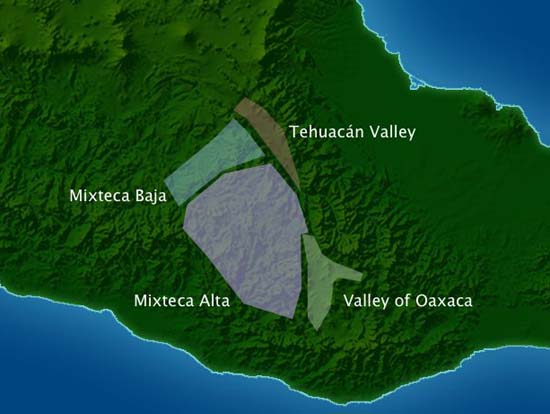
One of my favorite hinterlands in Mexico is the Mixteca Alta, but it’s no tourist destination. The few tourists who do come here just pass through, usually traveling between Mexico City, Puebla and points north to Oaxaca City and points south. The Mixteca Alta is in the southern state of Oaxaca, west of Oaxaca City, the capital. The mountain chains along the west and east sides of Mexico meet in Oaxaca, and in the Mixteca Alta, making its terrain quite rugged.

Here’s a perhaps typical valley in the rainy season, so the landscape is quite green. Note the red soil in the distance—erosion is rampant in some areas.

The earliest Spanish visitors described the Mixteca Alta as garden-like, green and lush. The erosion post-dates the Spanish arrival, due to a combination of over-grazing and lack of maintenance of the extensive terracing that held the soils prior to the Colonial period, and the highly erodable character of some highland soils.

Tlaxiaco is a major economic and population center in the Mixteca Alta, and surviving log structures indicate how many more trees there used to be in this area. Now, the log buildings coexist with modern rebar and cement construction.

Of course, given my interests, I find archaeological sites the most interesting features of the present landscape. Here my colleagues are standing in and on the side of a prehispanic ball court. The Mixteca Alta was a relatively densely populated region during some periods in prehistory, although it’s relatively lightly populated today.